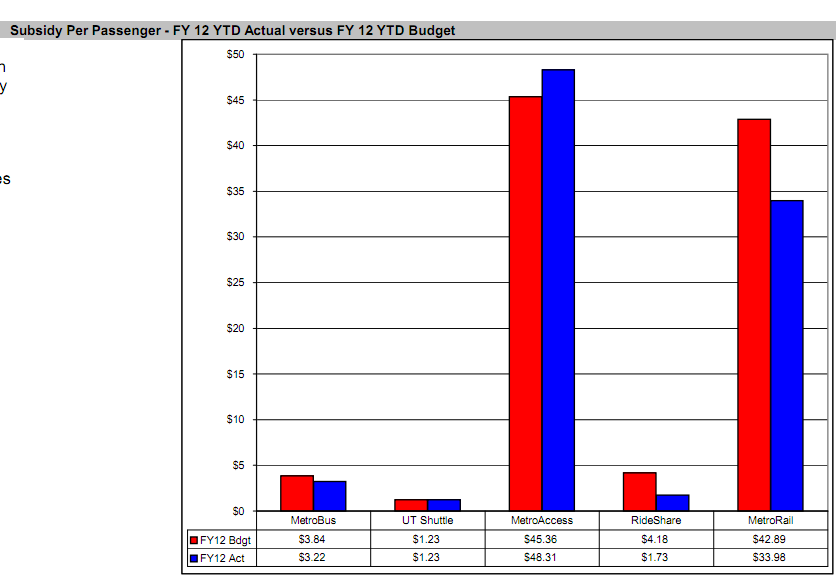Erica McKewen from Capital Metro let me know that one of the most recent monthly reports does, finally, have the subsidy information available for the general public.
Example from page 7 of December’s report, blown up for your perusal below. The most recent subsidy information shows that even with higher ridership after the 2011 changes (closing competing express bus routes, dropping unproductive shuttles, adding a peak trip); the Red Line still requires a subsidy of nearly 35 dollars per passenger per trip. In most other cities with successful light rail lines (that pull boardings well into the 5 digits per day), operating costs are similar or even lower than the bus system as a whole – which, if you can get higher passenger fares, means that operating subsidies on good light rail lines are lower than comparable buses, not ten times as high.
In tabular form, the most important numbers only:
| Mode | Operating subsidy per ride | Notes |
|---|---|---|
| Regular bus | $3.22 | On top of a regular fare of about $1 per trip, $2 for express. High productivity routes like the #1 have barely any subsidy at all. |
| UT shuttle | $1.23 | By contract, a certain percentage of operating costs is paid for directly by UT; the rest by Cap Metro – this is fare-free for students and de-facto fare-free for everybody else |
| Red Line | $33.98 | Fares were lowered for most people to be as low or even lower than express buses; many to most riders do not even pay Capital Metro taxes |
